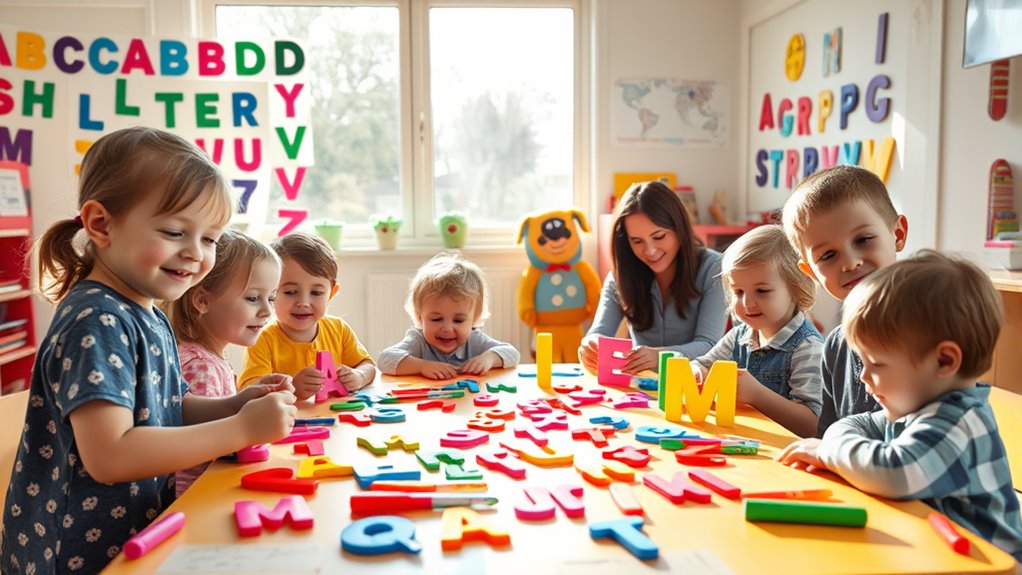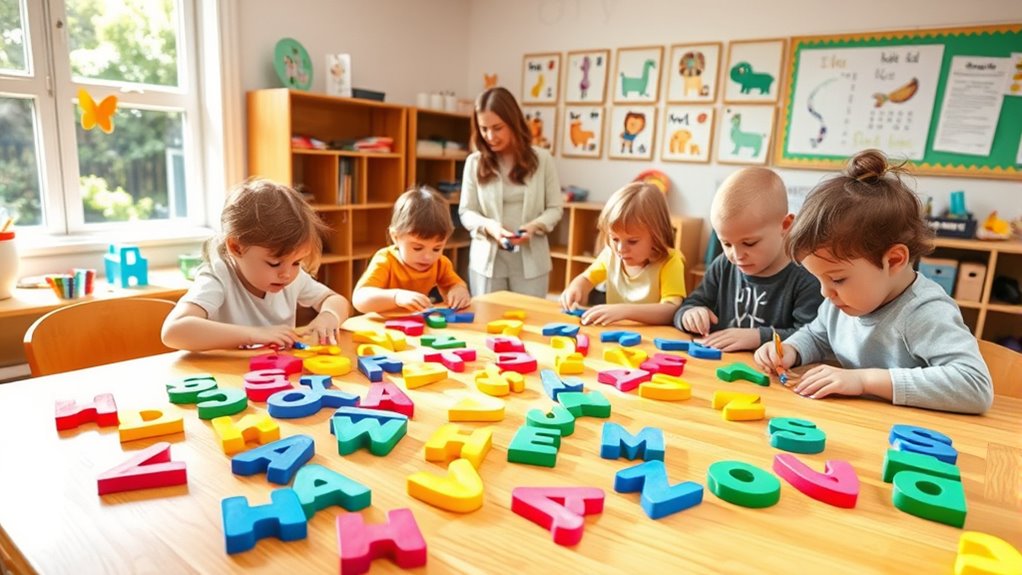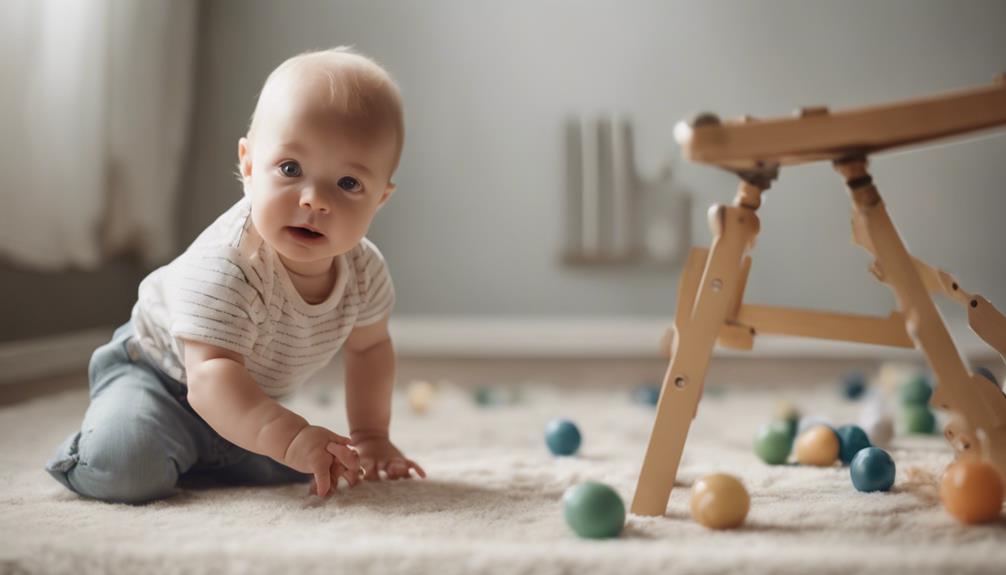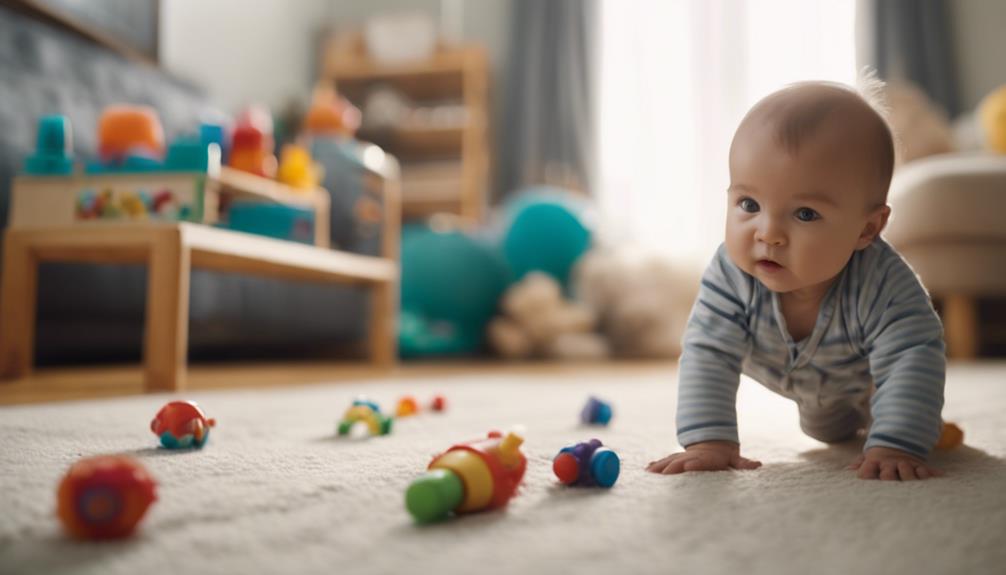To make learning the ABCs fun and engaging, incorporate playful activities and creative crafts that turn the alphabet into an exciting adventure. Use games like finding letters around the house, matching sounds to pictures, or building words with blocks. Crafts like collage-making or decorating letters help reinforce letter-sound connections. Adding storytelling and songs keeps activities lively and memorable. Keep exploring these hands-on ideas to inspire a joyful approach to mastering the alphabet—there’s more to discover!
Key Takeaways
- Incorporate fun phonics games like matching sounds to pictures to strengthen letter recognition and sound association.
- Use creative crafts such as letter collages and art projects to make learning engaging and memorable.
- Integrate storytelling and songs about letters to enhance recognition and phonics skills naturally.
- Blend interactive activities, including flashcards and puzzles, to foster excitement and curiosity about the alphabet.
- Make the ABCs an adventurous experience by combining play, crafts, and storytelling for effective early literacy development.

Have you ever wondered how learning the alphabet can turn into an exciting adventure? It’s all about making the process engaging and interactive, so your little one stays curious and motivated. When you focus on letter recognition, you’re helping your child identify and distinguish each letter from the rest, which is a vital first step in reading. Instead of rote memorization, you can turn this into a game where they find letters hidden around the house, in books, or on flashcards. These activities make it fun and memorable, helping them connect the visual shape of a letter to its sound.
Making letter recognition fun with games and activities boosts early reading skills and keeps kids motivated.
Phonics games are a fantastic way to reinforce this learning. They’re not only playful but also highly effective in helping children understand the relationship between letters and sounds. You can create simple activities like matching sounds to pictures or using letter blocks to build words. For example, you might say, “Can you find the letter that makes the ‘b’ sound?” and then have your child search for a ‘B’ card or object starting with that sound. These games turn abstract concepts into tangible experiences, boosting your child’s confidence as they begin to decode words.
To make letter recognition and phonics learning more lively, incorporate crafts and creative activities. For instance, you could have your child make a letter collage, cutting out pictures from magazines that start with a specific letter. This not only reinforces their understanding of the letter-sound connection but also improves fine motor skills. Another idea is to create letter-themed art projects, like decorating a ‘Z’ with zigzag patterns or painting an ‘A’ with apple images. These hands-on activities help solidify the alphabet in a memorable way, making learning feel like an adventure rather than a chore.
You can also turn storytelling into a playful activity by inventing stories around certain letters or characters that begin with specific sounds. As they craft their stories, they’ll practice recognizing letters and associating them with sounds naturally. These storytelling sessions can be accompanied by singing alphabet songs or playing with alphabet puzzles, further reinforcing recognition and phonics skills. Additionally, incorporating visual aids such as flashcards or letter charts can enhance their ability to recognize letters quickly and accurately.
Ultimately, the key is to keep learning lively and interactive. By blending letter recognition with phonics games and creative crafts, you transform the ABCs from a basic alphabet into an exciting journey of discovery. Your child will look forward to exploring new letters and sounds, building a strong foundation for reading while having tons of fun along the way.
Frequently Asked Questions
How Can I Adapt Activities for Children With Special Needs?
When adapting activities for children with special needs, you should focus on sensory adaptations and individualized strategies. You can modify materials to suit their sensory preferences, like using textured or visual aids. Tailor activities to each child’s abilities, offering extra support or alternative methods. By observing their responses and adjusting accordingly, you create an inclusive environment that encourages participation and learning, making sure every child feels successful and engaged.
What Are Some Time-Efficient Ways to Incorporate Alphabet Crafts Daily?
To include alphabet crafts in your daily routine efficiently, set quick daily routines like 10-minute craft intervals focused on a specific letter. Use themed craft intervals that match the day’s lesson or theme, making it fun and engaging. Prepare simple materials in advance, so you can jump right in without wasting time. This approach keeps activities consistent, manageable, and helps children connect letters through hands-on learning every day.
How Do I Assess a Child’s Alphabet Recognition Progress Effectively?
To assess a child’s alphabet recognition progress effectively, you should use simple assessment strategies like observing their ability to identify letters during activities and asking them to match or name letters. Keep progress tracking consistent by recording their responses and noting improvements over time. This approach helps you gauge their understanding accurately and adjust your teaching methods accordingly, ensuring they’re developing strong foundational alphabet skills.
What Safety Precautions Should I Consider During Craft Activities?
Did you know that proper safety measures can reduce craft-related accidents by up to 80%? During craft activities, you should follow childproofing tips like using non-toxic materials and keeping scissors and small items out of reach. Always supervise children closely, and adhere to craft safety guidelines to prevent choking or injuries. Creating a safe environment guarantees kids enjoy learning through play without unnecessary risks.
How Can I Involve Parents in Reinforcing Alphabet Learning at Home?
To involve parents in reinforcing alphabet learning at home, you can share simple home activity ideas that complement classroom lessons. Use parent engagement strategies like sending weekly newsletters with fun alphabet games or craft suggestions. Encourage parents to read alphabet-themed books together and play letter recognition games. When parents participate actively, it boosts their child’s confidence and reinforces learning, making the alphabet journey more effective and enjoyable for everyone.
Conclusion
By turning alphabet learning into playful adventures and creative crafts, you help children forge a strong connection with each letter. This approach taps into the theory that hands-on, engaging activities boost memory and understanding. When kids see, touch, and play with letters, they’re more likely to retain what they learn. So, trust the idea that fun, interactive experiences not only make learning enjoyable but also lay a solid foundation for lifelong literacy.










